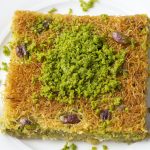Let’s face it, with changing climatic conditions, drought is becoming a common phenomenon in various parts of the world. And that’s not all; urbanization has led to the shrinking of backyards. But does this mean you have to forego the beauty and shade that trees offer? Absolutely not. Fortunately, there are drought-tolerant trees that can thrive in the harshest of conditions while adding an aesthetic appeal to your landscape. In this article, we will delve into the best drought-tolerant trees that you can consider for your urban backyard.
Understanding Drought-Tolerant Trees
Before we get into the best species to consider, it’s essential to understand what constitutes a drought-tolerant tree. These are trees that can survive extended periods of dry conditions. They have unique features such as thick bark, extensive root systems, and small, leathery leaves which help them retain water and withstand high temperatures. Drought-tolerant trees are not only hardy but are also known to be resistant to pests and diseases, making them ideal for urban backyards.
A lire en complément : What’s the Best Way to Set Up an At-Home Dialysis Space for Privacy and Comfort?
The Resilient Oak Tree
Oak trees are synonymous with strength and durability, thanks to their ability to adapt to various soil and weather conditions. In the face of drought, these trees survive remarkably well. Among the numerous species of oak trees, the Live Oak and the White Oak are particularly drought-tolerant.
The Live Oak, native to the southern United States, is an evergreen tree that grows to 50 feet tall and can live up to several centuries. It thrives in full sun and well-drained soil. Its broad, sprawling branches provide ample shade, making it a fantastic choice for your backyard landscape.
Dans le meme genre : How Can You Design a Pantry with a Focus on Zero-Waste Principles?
The White Oak, on the other hand, can grow up to 100 feet tall and has a magnificent fall color display. This tree is a slow-grower but once established, it is extremely drought-tolerant. The White Oak prefers well-drained soil and can tolerate shade, although it grows best in full sun.
The Vibrant Crepe Myrtle
If you’re looking for a tree that provides beauty alongside shade, the Crepe Myrtle is your best bet. This tree, growing between 15-30 feet tall, bursts into vibrant flowers in the heat of the summer, when most trees are struggling to survive. Its ornamental bark and vibrant flowers in various colors, from white to pink to deep red, make it a popular choice for urban backyards.
Crepe Myrtle is a sun-loving tree. It can tolerate drought well once established and prefers well-drained soil. This tree not only survives in harsh conditions but also flourishes, adding a splash of color to your landscape.
The Tall and Mighty Bald Cypress
The Bald Cypress tree contradicts the general perception that coniferous trees need plenty of water. This tree is known for its feathery foliage, tall and straight trunk, and its ability to withstand prolonged periods of drought. Native to southern US swamps, the Bald Cypress can grow up to 70 feet tall and is surprisingly drought-tolerant when grown in upland soils, making it an excellent addition to urban backyards.
The Bald Cypress flourishes in full sun and can adapt to various soil types, including clay, loam, and sandy soil. However, it prefers a slightly acidic soil pH. Despite its swampy origin, it is adaptable and hardy, tolerating both overly wet conditions and drought equally well.
The Adaptable Redbud Tree
Spring arrives with a burst of color when the Redbud tree comes into bloom. This small tree, growing up to 20-30 feet tall, is covered in pinkish-purple flowers even before the leaves appear. Its heart-shaped leaves turn yellow in autumn, providing a year-round display of beauty.
Redbuds are remarkably adaptable and can withstand a variety of soil conditions. They can tolerate both full sun and partial shade, making them versatile additions to your backyard. These trees are also drought-tolerant once established, although they prefer a well-drained soil.
Remember, even drought-tolerant trees need care and attention, particularly during the first few years of planting. Regular watering until they are well-established can ensure their survival and growth. Opting for these trees can ensure a lush, green, and vibrant backyard, even in the face of increasingly harsh urban conditions and changing climates.
The Hardy Mesquite Tree
One drought-tolerant tree that deserves a spot in any urban backyard is the Mesquite tree. This hardy tree is quite a sight to behold, standing tall at 15 to 30 feet and boasting a similar width. With its weeping branches and fern-like foliage, it adds a touch of elegance to any space.
The Mesquite tree is native to the arid parts of North America. It has successfully adapted to survive in areas with low rainfall, making it ideal for urban backyards in drought-prone regions. This tree has a deep root system, which enables it to draw water from deep underground, further enhancing its drought tolerance.
It is not just its ability to survive under harsh conditions that makes the Mesquite tree a great choice. It also blooms with yellow flowers in the spring, adding a pop of color to your backyard. The Mesquite tree thrives under full sun exposure and can tolerate a variety of soil types, as long as they are well-draining.
The Rugged Juniper Tree
The Juniper tree is another excellent choice for urban backyards. This tree is known for its rugged appearance and ability to thrive in harsh conditions. It stands tall at 15 to 50 feet, depending on the species, and is extremely drought-tolerant.
Many species of Juniper trees are native to the United States, particularly the western parts where conditions are arid. These trees have evolved to survive in these challenging climates, making them ideal for urban landscapes. Like the Mesquite tree, the Juniper tree also has a deep root system which helps it extract water from deep underground, even in the driest of conditions.
The Juniper tree thrives in full sun, although it can tolerate partial shade. It is adapted to various soil types, from sandy to clay soils, as long as they are well-drained. The Juniper tree is also known for its blue or blue-green foliage, which adds color to the landscape throughout the year.
Conclusion
In conclusion, the pursuit of a green and vibrant backyard in an urban setting need not be a daunting task, even in the face of challenging climatic conditions. By choosing drought-tolerant trees that are adapted to survive and thrive in harsh conditions, you are assured of a backyard that remains lush and appealing all year round.
Whether you choose the resilient Oak tree, the vibrant Crepe Myrtle, the tall and mighty Bald Cypress, the adaptable Redbud tree, the hardy Mesquite tree, or the rugged Juniper tree, you are sure to add not just beauty but also resilience to your urban backyard. Each of these trees thrives under full sun, is tolerant of a variety of soil types as long as they are well-drained, and is remarkably drought-tolerant.
In the face of dwindling natural resources and changing climates, choosing drought-tolerant trees for your urban backyard is not just a smart choice; it’s a sustainable and environmentally responsible one. So go ahead, bring life, color, and shade to your urban backyard with these amazing trees.











